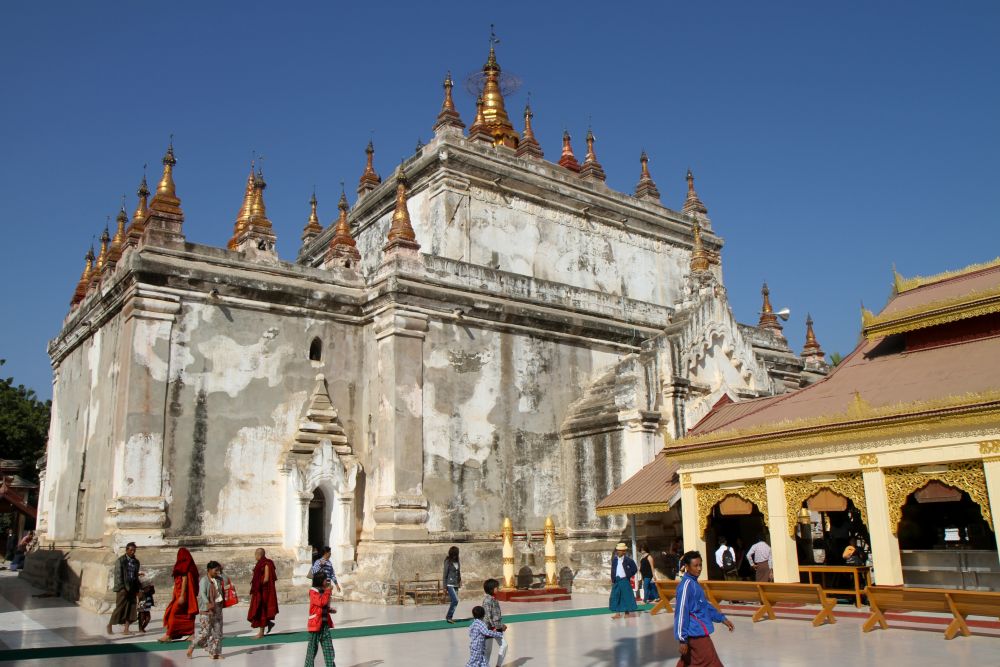

Bagan, once the capital of the ancient kingdom of Pagan, is an archaeological wonderland in Myanmar where the Manuha Temple stands as a testament to the city's storied past. The region's history as a tourist destination is inherently tied to the allure of its more than 2,000 Buddhist monuments dotting the landscape.
The Manuha Temple was built in 1067 by King Manuha, the captive Mon king from Thaton who was allowed to construct this temple as a symbol of his time in captivity. The monument is reflective of his feeling of captivity, evident in the cramped positioning of the giant Buddha images within the temple's walls.
Bagan first piqued international interest during the British colonial period in the late 19th and early 20th centuries. It became a stop for those interested in the grandeur of the British Empire's Asian territories, fostering the beginning of tourism in the area. However, due to limited access and facilities, it remained a destination for the more intrepid traveler.
Post-independence, Bagan slowly emerged on the world stage, especially after Myanmar's 1962 coup, when the government began to recognize the potential of Bagan's monuments as tourist attractions. Despite political and economic challenges, the region saw gradual infrastructure development to accommodate tourists who wished to explore the temples, including Manuha Temple.
Bagan's bid for UNESCO World Heritage status, although complicated by issues of preservation and restoration practices, eventually led to a spike in tourist interest. Manuha Temple, alongside other major temples, became a highlight for visitors soaked in the lore of ancient Burmese kings and mystique.
In recent years, tourists have been drawn to the rich tapestry of historical and cultural experiences available in Bagan. Sustainable tourism has become a significant focus, with an increase in community-based tourism initiatives that emphasize local participation and benefits from tourism activities.
Additionally, the trend of experiential travel has seen more tourists engaging in activities like hot air ballooning over the temple plains, which includes the majestic sight of Manuha Temple at sunrise or sunset. Meanwhile, the rise of digital nomadism and the search for unique, 'Instagrammable' locations have brought a younger demographic to Bagan's ancient sites.
The future of tourism in Bagan, and at Manuha Temple, looks optimistic, with plans for managed growth and continued efforts towards sustainable tourism. With the temple's religious importance and historical significance, it continues to be a central feature of the Bagan experience, drawing visitors keen on exploring the spiritual and artistic heritage of Myanmar.
Manuha Temple remains not only a place of worship but a beacon of Myanmar's rich past and a pivotal element for understanding the tapestry of history woven into the very plains of Bagan.